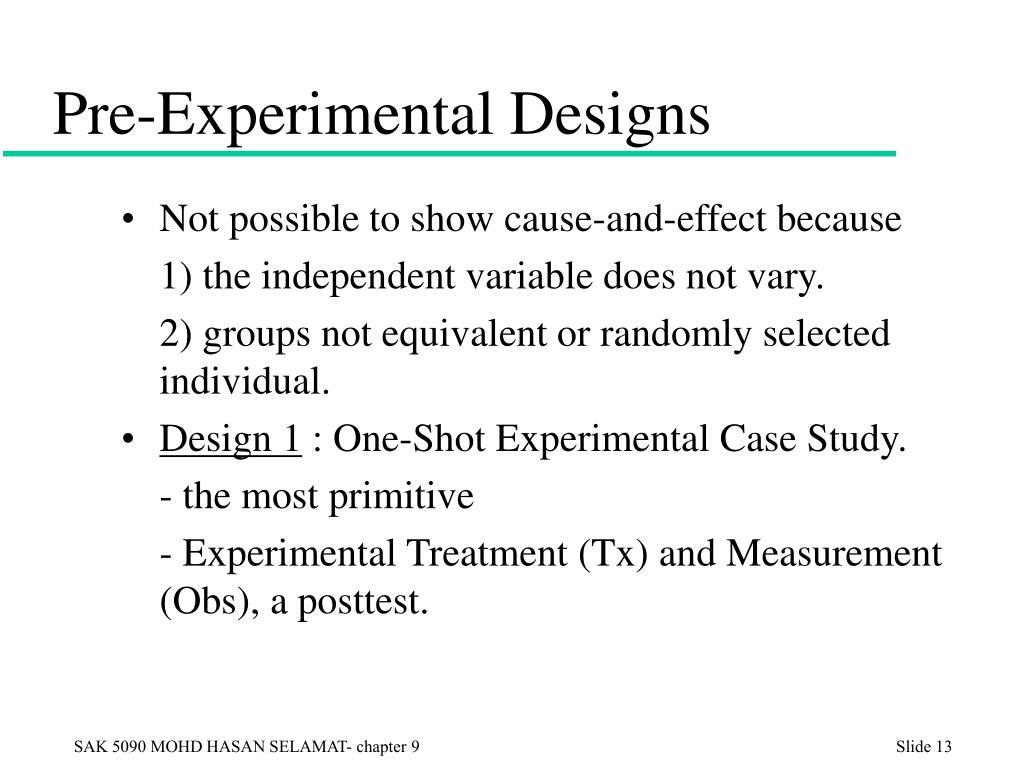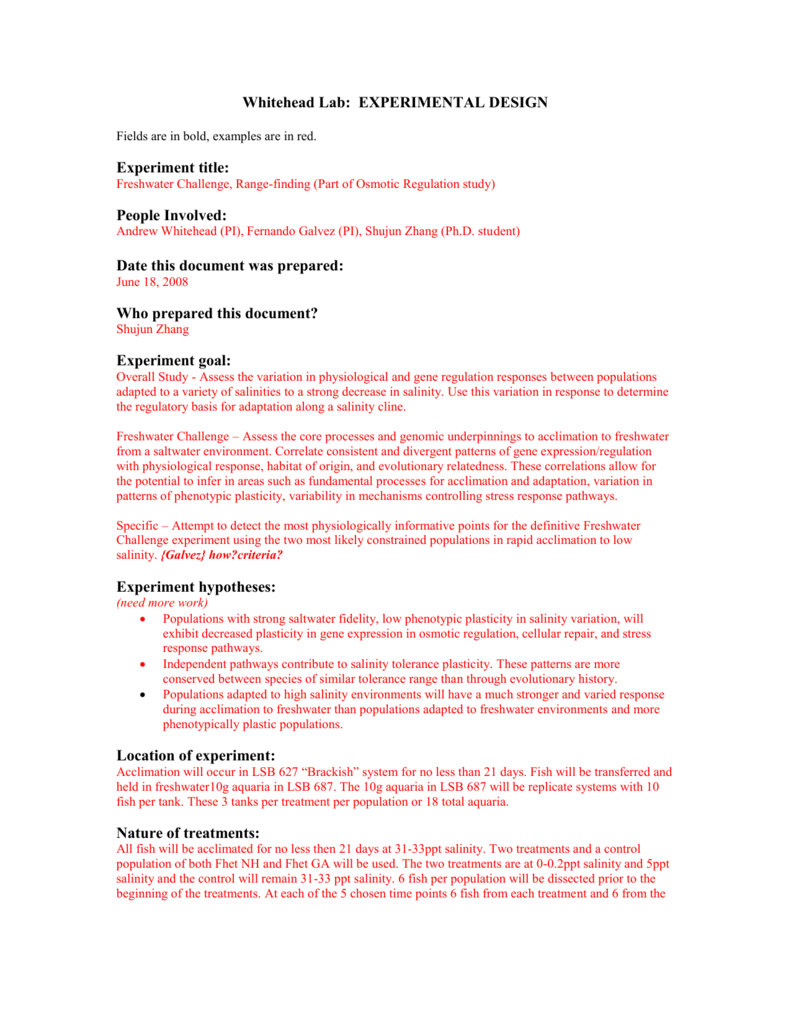Table Of Content

It allows researchers to conduct experiments that answer specific questions. This step determines how you'll collect data to determine the study's outcome. You should seek reliable and valid measurements that minimize research bias or error. Without proper planning, unexpected external variables can alter an experiment's outcome. With the ability to analyze the relationship between variables and using measurable data, you can increase the accuracy of the result.
Factorial Design Example
True experimental design is a statistical approach to establishing a cause-and-effect relationship between variables. This research method is the most accurate forms which provides substantial backing to support the existence of relationships. Analysis was performed on the DOE study to determine the effects of each factor on the responses. Only first order terms were included in the analysis to create a linear model.
True Experimental Design Cons
In the Graphs menu shown above, the three effects plots for "Normal", "Half Normal", and "Pareto" were selected. These plots are different ways to present the statistical results of the analysis. Examples of these plots can be found in the Minitab Example for Centrifugal Contactor Analysis. The alpha value, which determines the limit of statistical significance, can be chosen in this menu also. A common one to select is "Residuals versus fits" which shows how the variance between the predicted values from the model and the actual values. It is clear that in order to find the total factorial effects, you would have to find the main effects of the variable and then the coefficients.
Steps to conduct a true experimental research
This design is often used in clinical trials involving new medications or treatments. For example, if early results show that a new drug has significant side effects, the trial can be stopped before more people are exposed to it. Meet the Cluster Randomized Design, the team captain of group-focused research.
The Trial within Cohorts (TwiCs) study design in oncology: experience and methodological reflections - BMC Medical ... - BMC Medical Research Methodology
The Trial within Cohorts (TwiCs) study design in oncology: experience and methodological reflections - BMC Medical ....
Posted: Sat, 13 May 2023 07:00:00 GMT [source]
It's been the go-to for rigorous scientific inquiry for nearly a century, and it's not stepping off the stage anytime soon. Please include what you were doing when this page came up and the Cloudflare Ray ID found at the bottom of this page. The researcher then compared the scores on the exam for students in each condition. The results revealed that natural sunlight produced the best test scores, followed by yellow light and fluorescent light.
Others may need to be operationalised to turn them into measurable observations. In medical or social research, you might also use matched pairs within your between-subjects design to make sure that each treatment group contains the same variety of test subjects in the same proportions. If your study system doesn’t match these criteria, there are other types of research you can use to answer your research question. Use arrows to show the possible relationships between variables and include signs to show the expected direction of the relationships.
Comparing all four groups will give you a much clearer picture of whether the new teaching method works and whether the pretest itself affects the outcome. Let's say you want to figure out if a new way of teaching history helps students remember facts better. Two classes take a history quiz (pretest), then one class uses the new teaching method while the other sticks with the old way. This design is one of the classics, a staple in research for decades across various fields like psychology, education, and healthcare.
Adaptive Designs
One of the uniqueness of experimental research is in its ability to control the effect of extraneous variables. The true experimental research design relies on statistical analysis to approve or disprove a hypothesis. It is the most accurate type of experimental design and may be carried out with or without a pretest on at least 2 randomly assigned dependent subjects. Experimental design provides a structured approach to designing and conducting experiments, ensuring that the results are reliable and valid. Factorial design is an important method to determine the effects of multiple variables on a response. Traditionally, experiments are designed to determine the effect of ONE variable upon ONE response.

Step 5: Measure your dependent variable
We expect the participants to learn better in “no noise” because of order effects, such as practice. However, a researcher can control for order effects using counterbalancing. Others, like Sequential Design, are flexible and adaptable, making quick changes based on what they learn. And let's not forget the adventurous Field Experiments, which take us out of the lab and into the real world to discover things we might not see otherwise.
It involves a lot of resources, time, and money and is not easy to conduct, unless a foundation of research is built. Yet it is widely used in research institutes and commercial industries, for its most conclusive results in the scientific approach. By comparing their outcomes in biochemical tests, the researcher can confirm that the changes in the plants were due to the sunlight and not the other variables.
A famous example is the research conducted to test the effectiveness of different public health interventions, like vaccination programs. Researchers might roll out a vaccination program in one community but not in another, then compare the rates of disease in both. Instead of selecting individual students, you'd introduce the program to a whole school or maybe even several schools, and then compare the results to schools without the program. Non-Experimental Design has always been a part of research, especially in fields like anthropology, sociology, and some areas of psychology.
When it's unethical or impractical to assign participants randomly, that’s when a quasi-experimental design comes in. The major difference between experimental and quasi-experimental design is the random assignment of subjects to groups. Experimental design is a research method that enables researchers to assess the effect of multiple factors on an outcome. Physiological measures involve measuring participants’ physiological responses, such as heart rate, blood pressure, or brain activity, using specialized equipment. These measures may be invasive or non-invasive, and may be administered in a laboratory or clinical setting.
Create an experimental factorial design that could be used to test the effects of the different workout plans on the different types of people at the gym. The following Yates algorithm table using the data from the first two graphs of the main effects section was constructed. Besides the first row in the table, the row with the largest main total factorial effect is the B row, while the main total effect for A is 0. This means that dosage (factor B) affects the percentage of seizures, while age (factor A) has no effect, which is also what was seen graphically.
Last but not least, let's talk about Meta-Analysis, the librarian of experimental designs. In a correlational study, researchers don't change or control anything; they simply observe and measure how two variables relate to each other. Factorial Design became the talk of the town with the rise of computers.


No comments:
Post a Comment